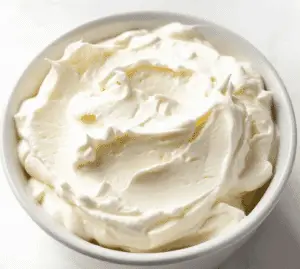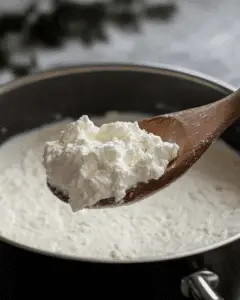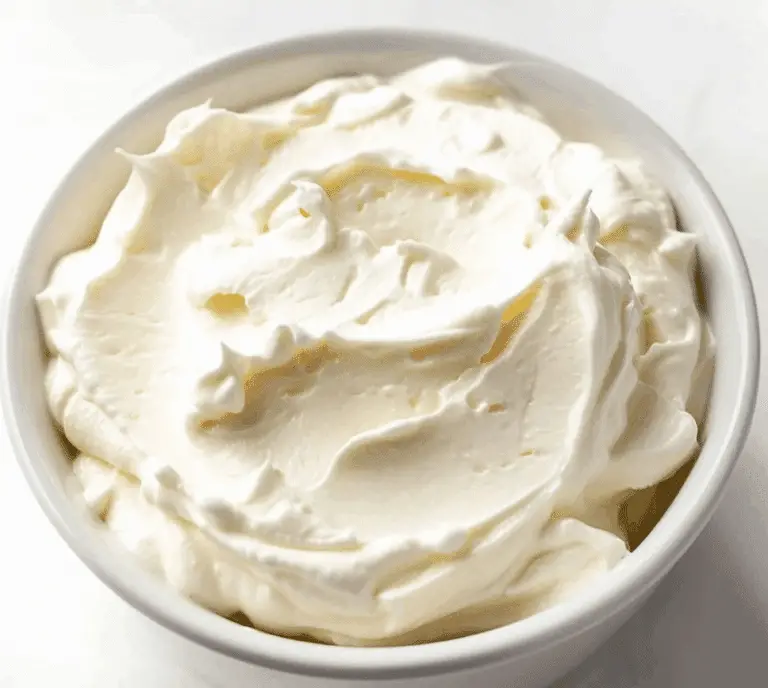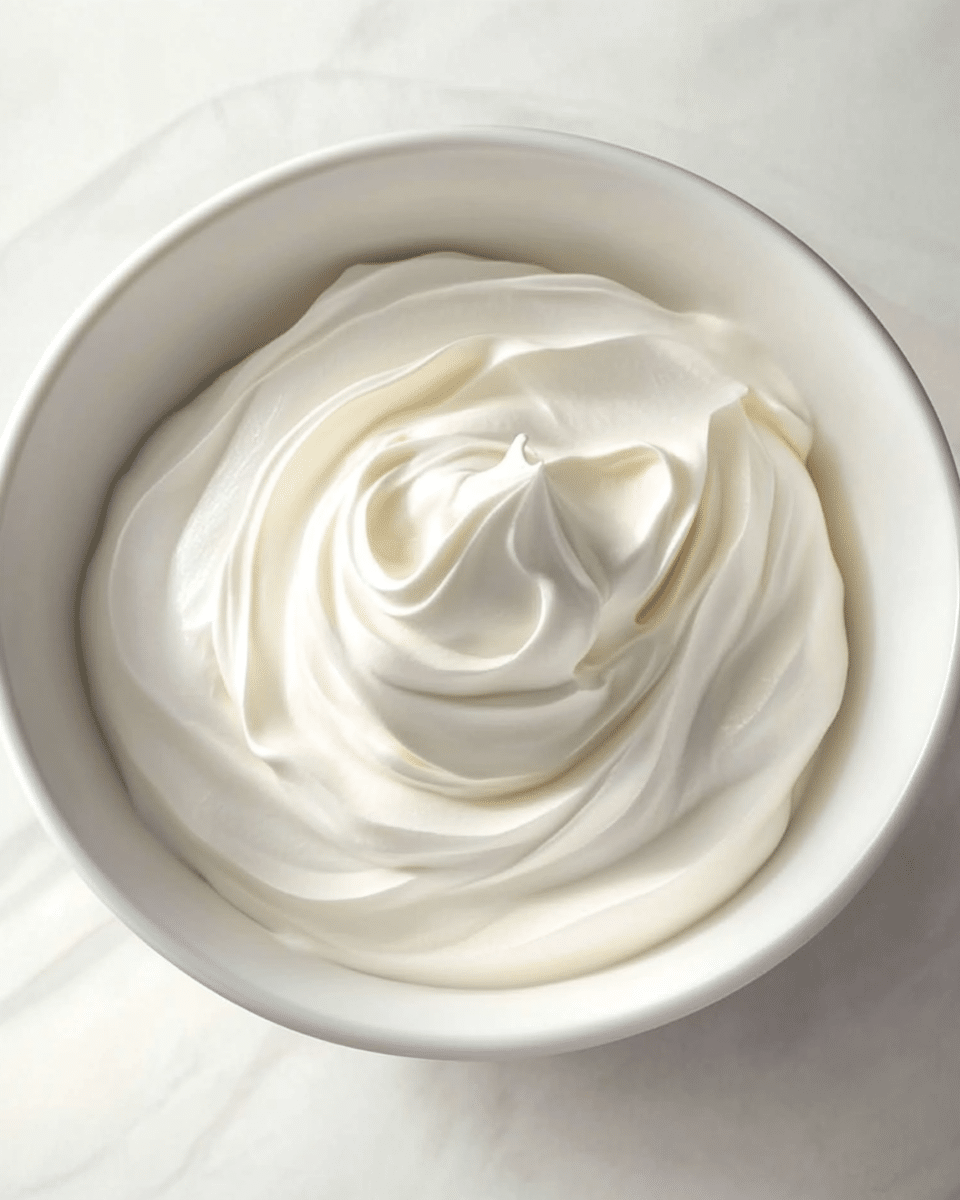Creamy, tangy, and incredibly versatile, this homemade cream cheese recipe delivers fresh flavor that store-bought versions simply can’t match. With just four simple ingredients and minimal effort, you’ll create a smooth, spreadable cheese perfect for bagels, desserts, or savory dishes.
Why You’ll Love This Recipe
This homemade cream cheese is remarkably simple to make yet delivers impressive results. You’ll love the satisfaction of creating something from scratch that typically comes from a store. The flavor is cleaner and fresher than commercial versions, with a wonderfully smooth texture you can control. Plus, you’ll avoid any preservatives or additives found in packaged cream cheese. The process is also surprisingly quick – in just 20 minutes of active time, you’ll have delicious cream cheese ready to chill and enjoy.
Ingredients
(Tip: You’ll find the full list of ingredients and measurements in the recipe card below.)
Whole milk forms the base of this homemade cream cheese, providing richness and essential milk solids that transform into creamy curds. For best results, use the freshest milk possible – ultra-pasteurized milk will work but may yield slightly less cheese.
Heavy cream enhances the richness and fat content of your cream cheese, creating that luxuriously smooth, spreadable texture we all love. If you’re looking for a lighter version, you can experiment with half-and-half, though the result won’t be quite as decadent.
White vinegar acts as the acidic agent that causes the milk proteins to coagulate and separate into curds and whey. Its mild flavor won’t overpower your cream cheese. If you don’t have white vinegar, lemon juice makes an excellent substitute with a slightly different flavor profile.
Salt is essential not just for flavor but also as a preservative that helps your cream cheese last longer. You can adjust the amount to your taste preferences, and consider using sea salt or kosher salt for a cleaner flavor.

Directions
- In a saucepan, heat the milk and heavy cream over medium heat until it begins to simmer. Watch carefully and stir occasionally to prevent scorching.
- Add the vinegar and stir for about 2 minutes, until the mixture begins to curdle. You’ll notice the milk solids separating from the liquid whey.
- Remove from heat and let sit for 10 minutes to allow curds to form completely. This resting time is crucial for proper curd development.
- Strain the curds through cheesecloth or a fine mesh strainer, then transfer to a bowl. For a smoother cream cheese, let it drain for about 20 minutes; for a firmer texture, allow it to drain longer.
- Add salt and stir to combine. The cream cheese may seem a bit loose at first but will firm up once refrigerated.
- Refrigerate until ready to use. The cream cheese will continue to set and develop flavor as it chills.
Servings and Timing
This recipe makes approximately 8 servings (about 1 cup total) of homemade cream cheese. Each serving contains roughly 70 calories. The prep time is 10 minutes with a cooking time of 10 minutes, totaling 20 minutes of active preparation. However, you’ll need additional time for draining and chilling before the cream cheese reaches its optimal consistency, so plan to make this at least 2-3 hours before you need it, or ideally, the day before.
Variations
Herb Cream Cheese: After the cream cheese has chilled, mix in 2 tablespoons of finely chopped fresh herbs like chives, dill, parsley, or basil.
Garlic and Onion: Add 1-2 minced garlic cloves and 2 tablespoons of finely chopped green onions for a savory spread perfect for bagels or crackers.
Sweet Cream Cheese: Incorporate 1-2 tablespoons of honey or maple syrup along with a dash of vanilla extract for a sweet version.
Berry Cream Cheese: Fold in 2-3 tablespoons of berry preserves or fresh macerated berries for a fruity spread.
Spicy Jalapeño: Mix in 1-2 tablespoons of finely diced jalapeños and a pinch of cumin for a kick.
Storage/Reheating
Homemade cream cheese should be stored in an airtight container in the refrigerator. Without commercial preservatives, it will keep for about 7-10 days. For the freshest taste and texture, consume within the first week.
The consistency may firm up considerably in the refrigerator. If you find it too firm, allow it to sit at room temperature for 15-20 minutes before using. If separation occurs, simply stir to recombine.
Cream cheese doesn’t freeze well as it can become grainy and watery upon thawing. However, if used in cooked dishes like casseroles or cheesecakes, previously frozen cream cheese may be acceptable.

FAQs
Can I use low-fat milk instead of whole milk?
Yes, you can use low-fat milk, but the resulting cream cheese will be less rich and creamy. For the best texture and flavor, whole milk is recommended. If using low-fat milk, you might want to increase the proportion of heavy cream slightly.
Why isn’t my milk curdling properly?
This typically happens if the milk isn’t hot enough when you add the acid. Make sure your milk mixture reaches a light simmer (about 180°F/82°C) before adding the vinegar. Ultra-pasteurized milk can also be more difficult to curdle, so try to use regular pasteurized milk when possible.
Can I use lemon juice instead of vinegar?
Absolutely! Lemon juice works as an excellent substitute for vinegar and adds a subtle citrus note to your cream cheese. Use the same amount (1/4 cup) of freshly squeezed lemon juice instead of vinegar.
My cream cheese is too runny. What did I do wrong?
Runny cream cheese usually indicates that it hasn’t drained long enough. Try straining it again through a cheesecloth for a few more hours in the refrigerator. You can also add a little more salt, which helps draw out additional moisture.
Is homemade cream cheese healthier than store-bought?
Homemade cream cheese can be healthier as it lacks the preservatives, stabilizers, and additives found in many commercial products. However, the basic nutritional profile (calories, fat) remains similar since you’re using the same primary ingredients—milk and cream.
Can I make this recipe dairy-free?
This particular recipe relies on dairy for the chemical reaction that creates cheese. For dairy-free alternatives, you would need a completely different recipe using ingredients like cashews, coconut cream, or commercial dairy-free cultures.
How can I make my cream cheese more tangy?
For tangier cream cheese, you can add a bit more vinegar or lemon juice after straining, or let the curds sit longer (up to 30 minutes) after adding the acid before straining. Cultured versions (using buttermilk or yogurt as a starter) will also develop more tang.
What can I do with the leftover whey?
Don’t discard the whey! This protein-rich liquid can be used in baking bread, making pancakes, or as a base for soups and stews. You can also use it to water acid-loving plants or add it to smoothies for a protein boost.
Can I double this recipe?
Yes, this recipe doubles well. Just ensure your pot is large enough to hold twice the volume and that you have adequate cheesecloth or straining capacity. The curdling and straining times remain the same.
Why does my homemade cream cheese taste different from store-bought?
Commercial cream cheese often contains stabilizers, preservatives, and is made with specific bacterial cultures that develop its characteristic flavor. Homemade versions have a fresher, cleaner taste but may lack some of the tangy notes found in cultured commercial products.

Conclusion
Making your own cream cheese is a rewarding culinary adventure that delivers fresh flavor and satisfying results. This simple recipe transforms basic ingredients into a versatile spread that’s perfect for everything from morning bagels to decadent cheesecakes. The process gives you complete control over the flavor and texture, allowing you to customize it to your preferences. Whether you’re looking to avoid additives in commercial products or simply want to experience the satisfaction of creating something from scratch, this homemade cream cheese recipe is bound to become a kitchen staple. Once you’ve mastered the basic technique, don’t hesitate to experiment with different flavors and variations to make this recipe truly your own.
Print
Homemade Cream Cheese Recipe
Homemade cream cheese made with simple ingredients like milk, cream, and vinegar for a fresh and creamy texture
- Total Time: 20 minutes
- Yield: 8 servings
Ingredients
1 quart whole milk
1/2 cup heavy cream
1/4 cup white vinegar
1/4 tsp salt
Instructions
In a saucepan, heat the milk and heavy cream over medium heat until it begins to simmer.
Add the vinegar and stir for about 2 minutes, until the mixture begins to curdle.
Remove from heat and let sit for 10 minutes to allow curds to form.
Strain the curds through cheesecloth or a fine mesh strainer, then transfer to a bowl.
Add salt and stir to combine. Refrigerate until ready to use.
Notes
- Ensure you use fresh, quality ingredients for the best results.
- The longer the cheese sits in the refrigerator, the firmer it will become.
- This cream cheese can be used as a spread or in recipes that call for cream cheese.
- Prep Time: 10 minutes
- Cook Time: 10 minutes
- Category: Dairy
- Method: Stovetop
- Cuisine: International
- Diet: Vegetarian

